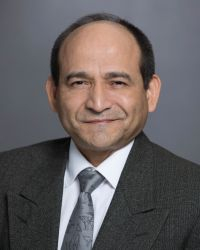Assessing the CO2 Sequestration Potential of the Paleogene Wilcox Group, Onshore Texas, USA
Presenter
Carlos A. Uroza
Research Scientist Associate
Bureau of Economic Geology
Jackson School of Geosciences
The University of Texas at Austin
Description
Carlos A. Uroza, Mariana I. Olariu, Maria Madariaga, Shuvajit Bhattacharya, and Susan Hovorka
Bureau of Economic Geology, University of Texas at Austin
Here, we present a comprehensive subsurface assessment to evaluate the Wilcox Group CO2 sequestration potential in a 590 km transect, from SW Texas to the limit with Louisiana. Subsurface evaluation included: 1- well-log correlation to identify the Wilcox stratigraphic units and their continuity, 2- 2D seismic interpretation to assist the identification of major structural elements in the area of interest, 3- structural and sand mapping to identify structural lows with enough sand presence for CO2 storage, 4- sedimentological analysis to understand the aerial distribution of depositional facies in support of GDE mapping, 5- salinity analysis of Upper Wilcox/Carrizo Fm. aquifer to identify and map the base of the USDW (define the no-go areas for CO2 sequestration), 5- petrophysical evaluation to estimate the reservoir properties in the Wilcox Group and evaluate the controls on reservoir quality, and 6- CO2 storage capacity estimations, using EASiTool software, in areas with low structural complexity and low well penetrations.
The research demonstrated the feasibility of the Wilcox Group for CO2 storage, especially in the central and eastern areas of the studied transect where the USDW is shallow enough to avoid contact with the Wilcox storage section. The study provided an opportunity to review the Wilcox depositional system within the studied transect to allow for the identification of main sand depocenters for storage site consideration. It represents a first pass to investigate the CO2 sequestration potential of the Wilcox. A trend capacity estimation is not provided due to regions with a large number of legacy wells that may need to be avoided by project developers to reduce the chance of leakage.
